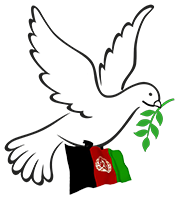Meanwhile, the Ministry of Economy (MoE) said that they have long-term programs to counter poverty in the country.
The United Nations Office for the Coordination of Humanitarian Affairs (OCHA) said that of the 23.7 million people in need of life-saving assistance, “humanitarian partners have prioritized 17.3 million people to receive well-coordinated multi-sectoral assistance in 2024, for which US$3.06 billion is required.”
According to the report released by OCHA, the 23.7 million people–more than half of Afghanistan’s population–will require humanitarian assistance to survive in 2024 as the country continues to reel from decades of war and grapple with climate-induced crises, recurrent natural disasters, entrenched poverty, and barriers to women’s participation in public life.
“Key priorities include food aid, safe drinking water, healthcare, education, and addressing acute water, sanitation, and hygiene (WASH) needs,” the report said. “The protection of vulnerable groups, especially women, children and those living with disabilities, remains paramount.”
TOLOnews interviewed Alam Bibi, 55, who collects discarded bottles of water, and metal, in the capital of Kabul.
Alam Bibi said that she is forced to do so in a bid to make ends meet for her family of 10 members.
“I don’t have a home. Some people give 10 or 5 Afs. My son is small and my husband is old,” she said.
Nearly half of all Afghans live in poverty, with rates particularly high among women, OCHA said, adding that despite low-level economic stabilization in 2023, 65 percent of families still experienced an economic shock.
“We call on the government to provide us with work opportunities, so we can get over this poverty and economic hardship,” said Abdul Wasi, a resident of Kabul.
Meanwhile, the Ministry of Economy (MoE) said that they have long-term programs to counter poverty in the country.
“Focus on the national projects, which cause work opportunities and reduce poverty rate and cause enduring economic stability is the core attention of the Ministry of Economy,” he said.
 Afghanistan Peace Campaign
Afghanistan Peace Campaign